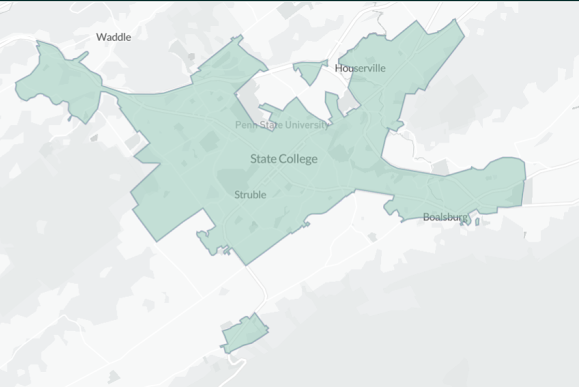Downtown Democracy
Written by Evan Ferstl
Some STHV Members learning about the Next Generation Connectivity and Mobility Plan at a Community Engagement Session at the Allen Street Gates, State College's frequent downtown gathering space for protests and events. Photo from Kittelson & Associates, Inc.
In my opinion, one of the less talked about aspects of good urban design is its role in facilitating a healthy democracy. This is particularly the case with public squares, which have long been sites of some of the most dramatic protests in cities across the world. These are places that, in a well designed city, are at the center of public activity. They are accessible to many and good spots to gather by foot for any occasion. Here’s an example from our country. During the summer of 2020, there was much to protest about. Even though people were still wary of public gatherings due to COVID, Americans still overwhelmingly gathered by foot, not in car caravans, and they chose their spots carefully. Public parks. Government plazas. Downtowns. Places conducive to pedestrian activity.
Another interesting example to bring up at this point is Egypt. During the country’s 2011 revolution, which saw the brief installment of democracy there, tens of thousands of protestors took to Tahrir Square, a public plaza in the heart of bustling Cairo. They occupied this space for weeks until they forced a change in the government. Now, after the military has reinstalled authoritarian rule, the government is moving all its offices to a new capital city, sprawling in design and far removed from the dense, pedestrian friendly environment that had enabled Egyptians to stand up to their government. Is this a coincidence? Or has the government realized that allowing itself to exist in proximity to such a space makes it vulnerable to public accountability?
In State College, the most popular place to demonstrate seems to be at the Allen Street Gates. This makes sense, as it might be the closest thing to a plaza that the town has, with room for a decent number of people to stand at once. It is also in a highly visible location at the border between downtown and campus. You’ll almost never see people demonstrate in one of our massive parking complexes, or in a strip mall, or along a giant multi-lane intersection. These places are designed for private life, and certainly not for anyone who wants to be heard.
Protests can be chaotic and disruptive, but they are also a vital tool for keeping democracy alive and healthy. No matter what side you’re on politically, I would bet anything there are issues you’d be willing to go out and protest about. Good city design makes it easier for you to do so, and much more likely that others will be around to listen.




Comments
Post a Comment